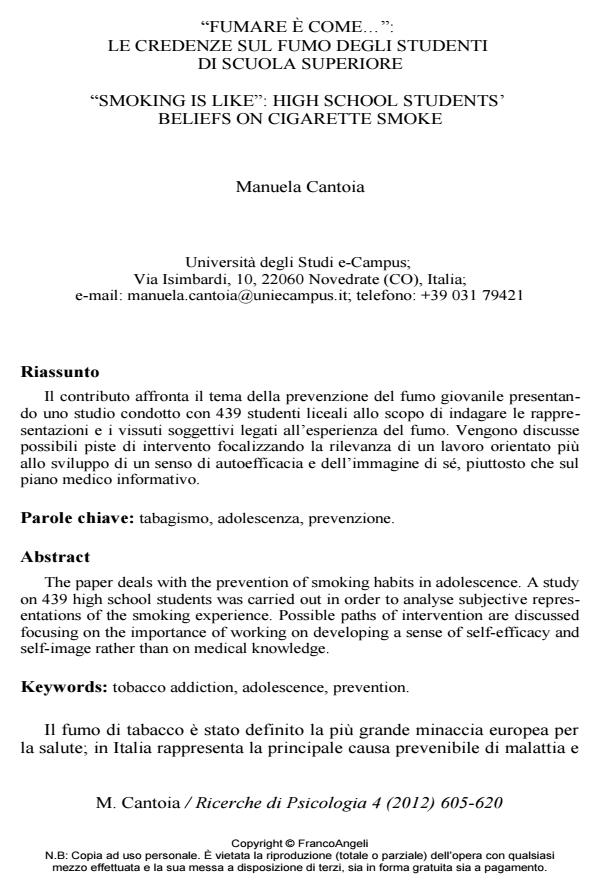"Smoking is like..": high school students’ beliefs on cigarette smoke
Journal title RICERCHE DI PSICOLOGIA
Author/s Manuela Cantoia
Publishing Year 2013 Issue 2012/4
Language Italian Pages 16 P. 605-620 File size 223 KB
DOI 10.3280/RIP2012-004002
DOI is like a bar code for intellectual property: to have more infomation
click here
Below, you can see the article first page
If you want to buy this article in PDF format, you can do it, following the instructions to buy download credits

FrancoAngeli is member of Publishers International Linking Association, Inc (PILA), a not-for-profit association which run the CrossRef service enabling links to and from online scholarly content.
The paper deals with the prevention of smoking habits in adolescence. A study on 439 high school students was carried out in order to analyse subjective representations of the smoking experience. Possible paths of intervention are discussed focusing on the importance of working on developing a sense of self-efficacy and self-image rather than on medical knowledge.
Il contributo affronta il tema della prevenzione del fumo giovanile presentando uno studio condotto con 439 studenti liceali allo scopo di indagare le rappresentazioni e i vissuti soggettivi legati all’esperienza del fumo. Vengono discusse possibili piste di intervento focalizzando la rilevanza di un lavoro orientato piu allo sviluppo di un senso di autoefficacia e dell’immagine di se, piuttosto che sul piano medico informativo.
Keywords: Tobacco addiction, adolescence, prevention
- Le credenze epistemologiche circa il sapere medico: Quale ruolo nei comportamenti del paziente? Alessandro Antonietti, Manuela Cantoia, in RICERCHE DI PSICOLOGIA 2/2015 pp.341
DOI: 10.3280/RIP2014-002010
Manuela Cantoia, "Fumare è come..": le credenze sul fumo degli studenti di scuola superiore in "RICERCHE DI PSICOLOGIA " 4/2012, pp 605-620, DOI: 10.3280/RIP2012-004002